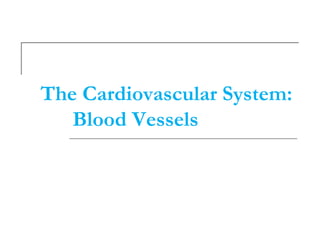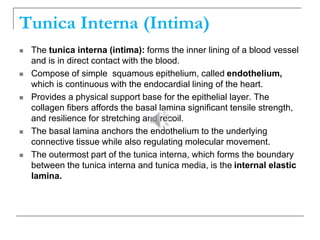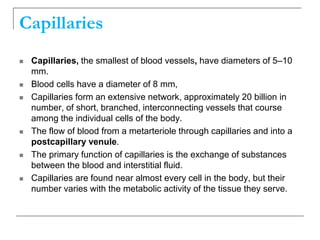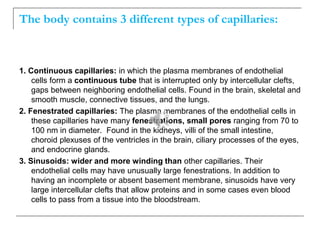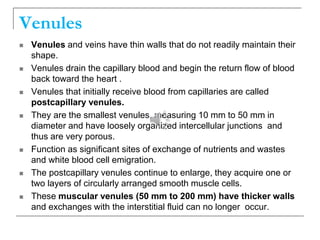The document summarizes the cardiovascular system, focusing on blood vessels. There are five main types of blood vessels - arteries, arterioles, capillaries, venules and veins. Arteries carry oxygenated blood away from the heart, branching into smaller arterioles and then capillaries where gas and nutrient exchange occurs. Capillaries then join to form venules and veins to return deoxygenated blood back to the heart. Each vessel type has a distinct layered structure and role in regulating blood flow and pressure throughout the body.
